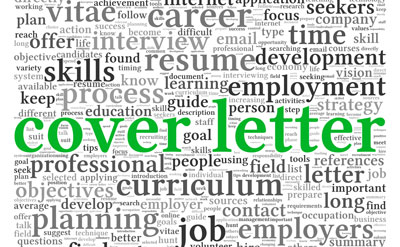
Samantha Pearce is the owner of Words Worth Reading an online editorial service for Job Seekers, Students, Writers and Businesses. Words Worth Reading offer individually-tailored, comprehensive resume and application form writing and editing services. She outlines the dos and don’ts of writing a cogent and convincing covering letter.
Submitting your resume is only part of what you need to do when responding to a job advertisement or making a speculative enquiry to a prospective employer. Along with your resume you also need to send to a covering letter. Even if an advertisement asks you to “send your resume..” always include your covering letter. It adds a personal touch which employers like. The main purpose of the covering letter is to project your self as the sort of person the person reading it would want to employ and to motivate them to want to read more. Employers often receive hundreds of resume’s and applications for just one job opportunity, and very rarely would they read all submissions. The covering letter can act as the difference between a resume that is read and one that is discarded – no matter how good the resume might be.
The Basis Rules
-
Ensure the letter is addressed to an appropriate, named individual. This demonstrates that you have taken the time to find out to whom the letter should be sent.
-
Start the letter with “Dear Mr X /Ms Y. Avoid starting with first names unless you know the recipient personally and you are using this as a way to enquire about the job vacancy or opportunities.
-
Avoid the use of”Dear Sir/Madam” It makes it an impersonal communication and shows you haven’t taken the time to find out to whom the letter should be sent.
-
End the letter with a “Thank you” followed by “Yours sincerely or Best Regards”. Avoid ending with “Yours faithfully”.
-
Absolutely no spelling or grammar errors are permitted. These show lack of attention to detail.
-
Use bold, confident and clear language. This illustrates some of your personal characteristics.
-
Don’t repeat what is already in the resume. This is an opportunity to say more about yourself.
-
Ensure the covering letter is typed. Never hand-write the letter unless specifically requested to do so. Using a word processor highlights your familiarity with using computers.
-
If sending by post then use good quality paper and use a strong A4 envelope so as to avoid folding the letter. This looks professional and avoids the letter being lost or separated from the resume.
-
Don’t forget to include your contact details and the date you sent the letter. If you are sending by email then you won’t need your postal address unless you specifically want replies to be sent there.
How to Write an Effective Covering Letter Structuring the letter
The covering letter needs to be short and to the point and be no more than one side of A4. It should have three paragraphs; the opening paragraph, the middle paragraph and the closing paragraph.
The Opening paragraph
-
Grab the attention of the reader
-
Explain why you are writing
-
If there is a reference number then quote it along with the job title.
-
If you are sending a speculative letter, state the type of job you are interested in.
The Middle paragraph
-
Set out a selected number of two or three of your skills and attributes which preferably aren’t included within your resume.
-
Check that your skills and supporting examples match with the essential and preferable requirements that are often mentioned in the original advertisement
-
Be factual and don’t simply give your opinions
-
Always keep the employer in mind and aim to demonstrate that your skills and attributes are what they are looking for
The Closing paragraph
-
The purpose of this paragraph is to say “I would like meet with you to discuss further”
-
Offer to make contact directly in order to arrange a follow up discussion, or give them the opportunity to contact you by stating how and when you could be contacted
-
Always say “thank you” before signing off
A Check list of “Do’s and Don’ts”.
Do:
-
Limit it to one page
-
Use three main paragraphs
-
Address it to a named person
-
Say where you saw the advertisement
-
Specify selected skills and achievements that will interest the employer
-
Do your homework and if possible research the Company who are advertising the job
-
Give your letter a title and job reference number if appropriate
-
Use good quality paper and send with your resume in a strong A4 envelope
-
Proof read your letter before sending it, and ask someone to check it for you
-
Refer the recipient to the resume
Don’t:
-
Address it to a”Dear Sir” or a “Dear Madam”
-
End “Yours faithfully”
-
Be too pushy by stating you will contact them – give them the option of contacting you too
-
State how you would expect the job to benefit you
-
Write the same letter for each application
-
Use generalisations such as “I enjoy challenging work”
-
State your current salary unless specifically requested to do so
-
Fold your letter and resume
Samantha Pearce runs Words Worth Reading- an editorial service for Job Seekers, Students, Writers and Businesses.
Words Worth Reading offer individually-tailored, comprehensive resume and application form writing and editing services at fantastic prices, with quick turnaround times.
For more information go to www.wordsworthreading.co.uk
Contact the team direct on sam@wordsworthreading.co.uk
Call them on 00 44 1277 824 640
Samantha Pearce is CaribbeanJobs.com’s resume expert.
